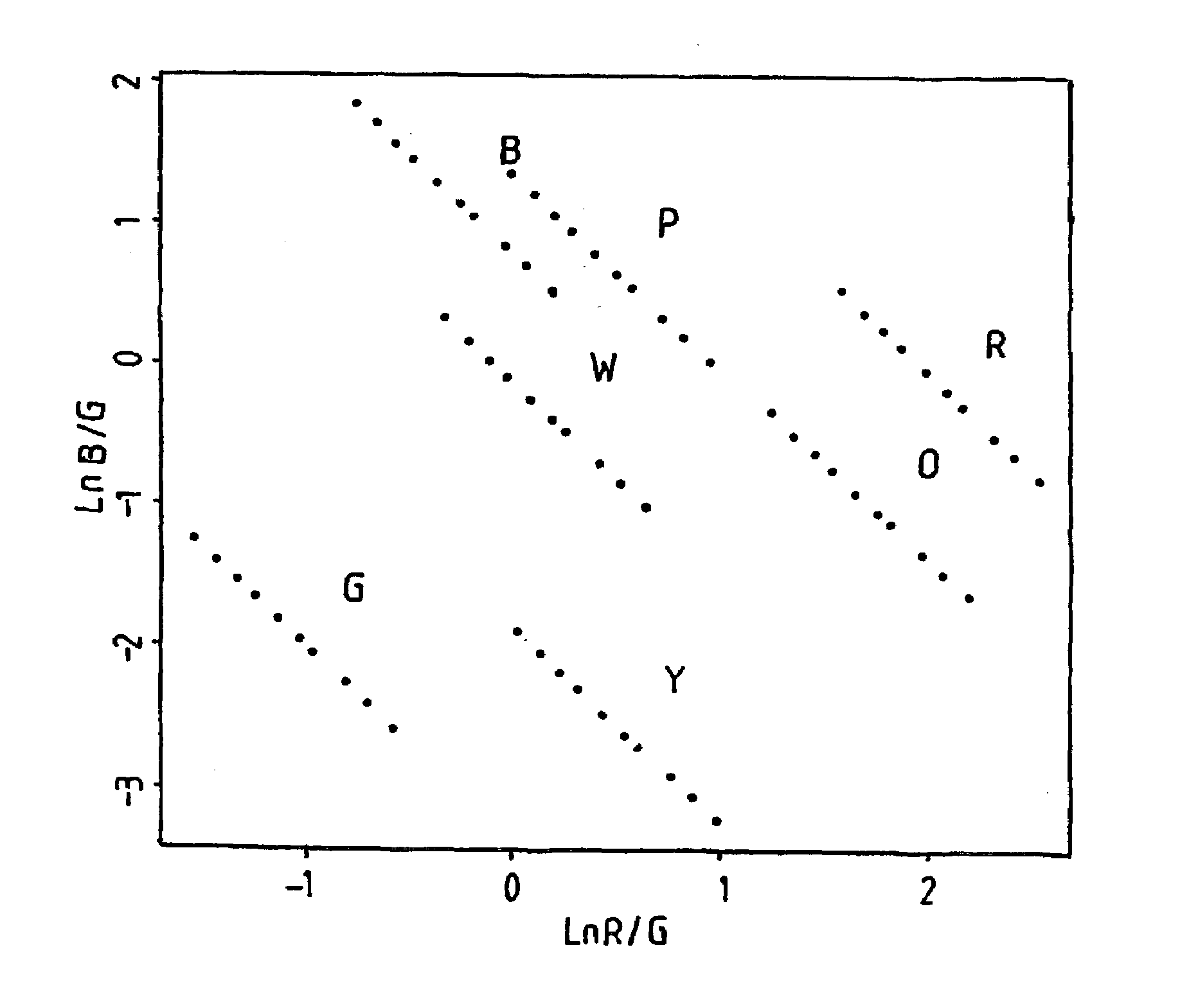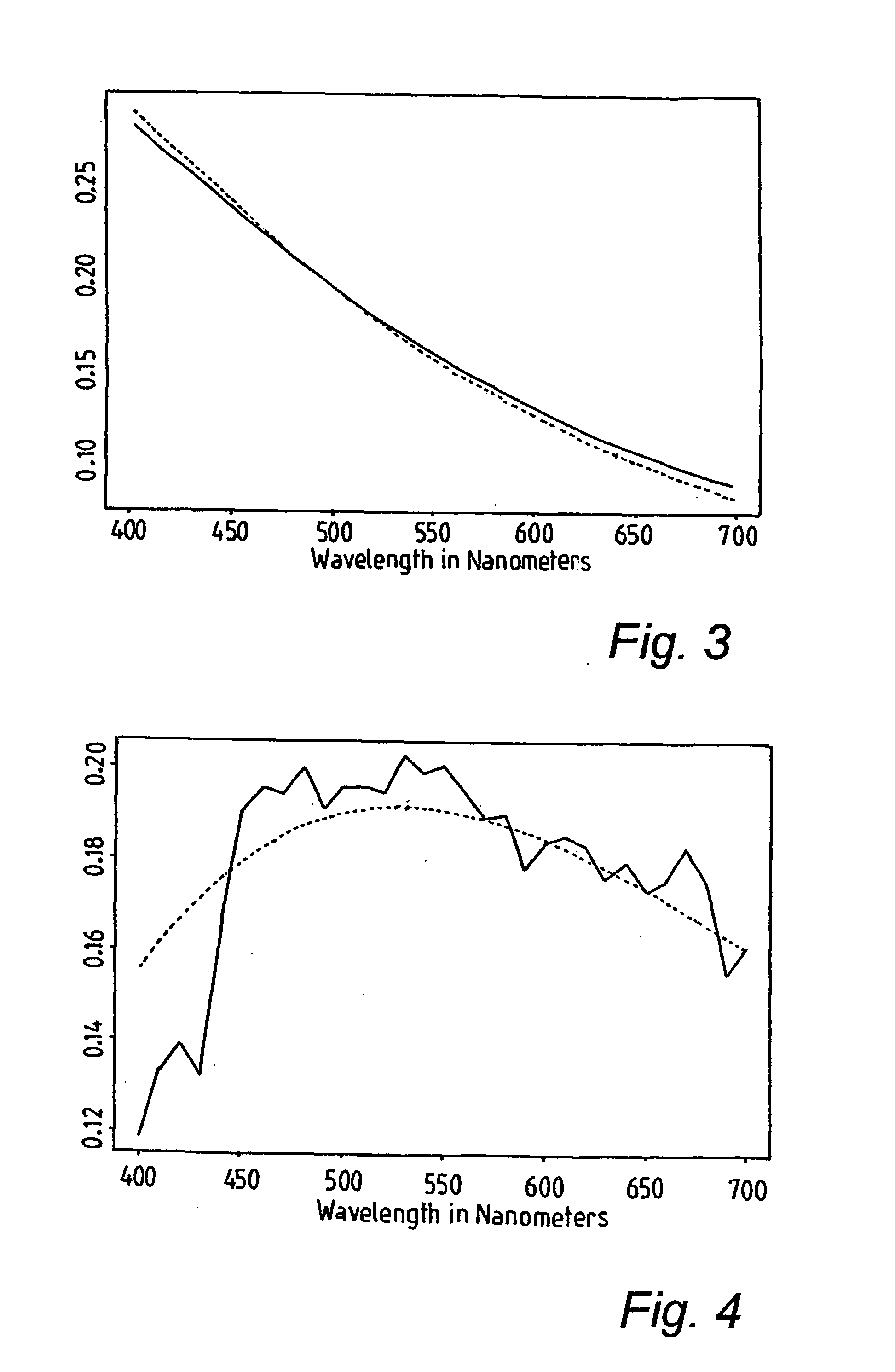Color signal processing
a color signal and signal processing technology, applied in the field of colour signal processing, can solve the problems of chromaticity normalisation, object and/or image analysis, and camera development with a very limited response band width to wavelengths
- Summary
- Abstract
- Description
- Claims
- Application Information
AI Technical Summary
Benefits of technology
Problems solved by technology
Method used
Image
Examples
Embodiment Construction
[0108]The invention will now be further described with reference to the accompanying drawings.
[0109]Figure Captions
[0110]FIG. 1: Normalised 2500K black-body radiator: exact equation (solid line), approximation (dashed line). Note in this case the two lines are on top of each other.
[0111]FIG. 2: Normalised 5500K black-body radiator: exact equation (solid line), approximation (dashed line).
[0112]FIG. 3: Normalised 10000K black-body radiator: exact equation (solid line), approximation (dashed line).
[0113]FIG. 4: Normalised 5500K CIE D55 standard daylight (solid line). Planckian illuminant (dashed line).
[0114]FIG. 5: CIE xy chromaticity diagram. Solid curved line is the chromaticity locus for all typical Planckian black-body lights. From left to right illuminants begin bluish, become whitish then yellowish ending in reddish light. Crosses (‘+’) denote chromaticities of typical natural and man-made lights.
[0115]FIG. 6: Perfect Dirac-Delta camera data (sensitivities anchored at 450 nm, 54...
PUM
 Login to View More
Login to View More Abstract
Description
Claims
Application Information
 Login to View More
Login to View More - R&D
- Intellectual Property
- Life Sciences
- Materials
- Tech Scout
- Unparalleled Data Quality
- Higher Quality Content
- 60% Fewer Hallucinations
Browse by: Latest US Patents, China's latest patents, Technical Efficacy Thesaurus, Application Domain, Technology Topic, Popular Technical Reports.
© 2025 PatSnap. All rights reserved.Legal|Privacy policy|Modern Slavery Act Transparency Statement|Sitemap|About US| Contact US: help@patsnap.com



